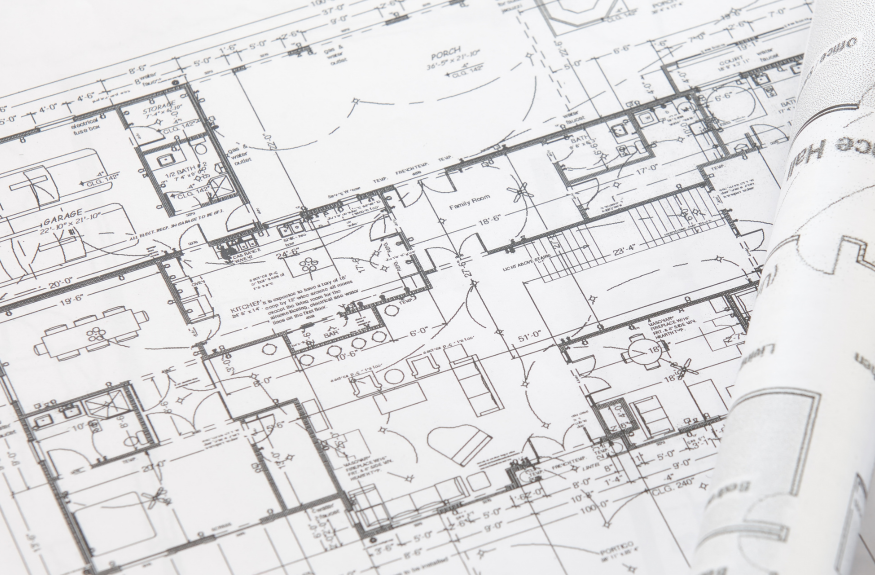Tenant Buildouts: Building a Foundation
Commercial workplaces make up a huge proportion of real estate and economic activity and require skillful navigation to create. Having a great place to work is about more than space or furniture; it’s about having a home base that’s a hub for operations, values, and culture.
Even though some organizations seem to have this down to a science, the fact is many tenants find themselves in uncharted waters. Whether you’re a start-up or new organization, face expansion, relocation or are grappling with the evolution of what a workplace is, having a good sense of the process is imperative.
Although the office has always been perceived as an extension of core values; the “brand” has taken on new meaning for the workforce. In this post-Covid world, the task of enticing employees to want to come back to the office with forward thinking, flexible, comfortable, safe working environments that will enable business owners attract and retain employees should be top-of mind in new office designs.
Tracking a Tenant Buildout
At a very high level, most organizations generally track with a process similar to the following:
- Consider allies who can help you navigate from day 1, such as a licensed commercial Real Estate Broker
- Determine where you want to be geographically
- Establish the type of facility that will suit your needs
- Consciously evaluate your workforce and what matters to them
- Identify key market dynamics such as real estate costs, commute times, flexibility options to support growth, convenience, or amenities attractive to your workforce, proximity to other relevant organizations, etc.
- Search the market for available space
- Conduct Due Diligence and negotiate lease terms
- Work with trusted partners to plan and design your space
- Build out your space
- Occupy and evaluate
This brief article will lightly touch these phases, but what’s important to keep in mind is: you are not in this alone. Trusted allies are your best resources to uncover opportunities, blind spots and balance out your project team. So, whether you’re brand new to this, an old pro or it’s been a while, first: build a great team.
Important Players
For many, the rational place to begin is finding a licensed commercial real estate partner. Not entirely dissimilar than when shopping for a personal home and leveraging a realtor, a good commercial partner will offer market insight, ability to help evaluate your preliminary needs, and provide brokerage services to negotiate leases that can have substantial cost implications short and long term. That broker will act as the liaison between all building owners, landlords, architects, designers, contractors, etc. and will set the initial tone for the project as it progresses thru the various stages.
A good Broker will be your guide to finding opportune properties to consider, orchestrate site visits, and communicate with building owners. They will typically provide a wide range of options that can then be focused down to priority sites.
Ultimately to permit and construct your project, you will require a licensed Architect, even if only renovating existing space. And some commercial real estate partners begin on-boarding a design partner early enough to help you identify goals and major project parameters while your property search is being conducted, as this can streamline the process significantly.
Many however begin on-boarding a design partner once a focused “short list” of potential properties is established so that design partner may produce very preliminary floor plans known as “Test fits” to help inform the final decision about where to locate. It cannot be overemphasized how important the selection of a great design partner is to the ultimate success of your project. Many firms are qualified to produce drawings to permit and build-out spaces, however every project encounters challenges, and whether these are navigated with organized calm or high drama can often be greatly influenced by your design partner.
Potential Partners
Depending on schedules, budgets, or recommendations on design partners that would suit your organization, brokers will typically issue a Request for Proposal (RFP). This RFP will include detailed information about the client, overall project parameters including desired size, locations, expectations of services, documentation, deliverables, contracts, timeline, etc. The RFP includes a spectrum of requirements necessary to carry the project from inception through final occupancy and beyond.
When meeting potential partners, consider not only the cost of fees; but, also relevant experience, size and capabilities, team makeup, personalities and proven ability to execute and deliver great results.
Consider the following questions when vetting a design firm:
- How eager are they to get to know your unique needs?
- How much does the portfolio of work they share inspire you?
- Are they willing to bring the latest insight, new ideas, or questions your team hasn’t yet considered to bring value to the process?
You’ll be working closely with this team for many months or even years (on larger projects), so be sure and find talented people you communicate well with and enjoy working with. There must be confidence in the chosen design firm as well as a level of trust; if you don’t hit it off on a personal level then that firm may not be the best fit for you.
To stay up to date on news and resources such as this and other topics of importance to the real estate industry, subscribe to the free CRE Insight Journal Newsletter using this link.









